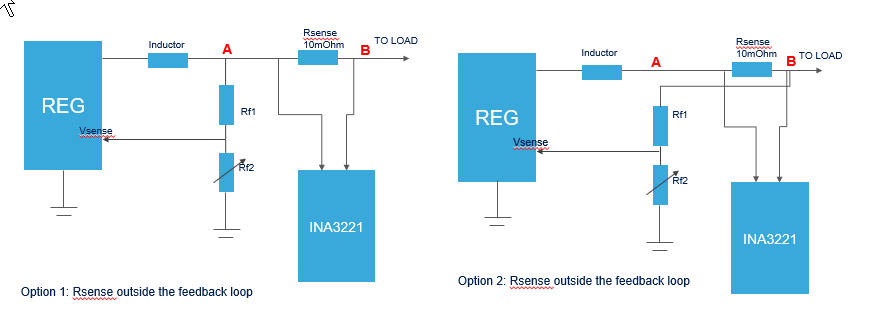Other Parts Discussed in Thread: INA3221, INA301,
Hello,
I am involved in the design of a configurable power management which current and voltage telemetry.
For that we are exploiting a digipot in the voltage divider and a sense resistor (10m Ohm) connected to your INA3221 (voltage and current monitor).
I have a question about the position of the feedback loop related to sense resistor and load (a digital device with an highly variable current profile).
I believe that the optimal position for the feedback tap would be between the sense resistor and the load in order to compensate the sag that we otherwise would have if we put the sense resistor outside the feedback tap.
Can you see any drawback with this solution? What if we put the sense resistor and hence the voltage and current sense very close to the loading device? would thet be ok?


